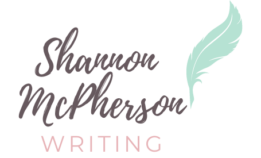I have an index card on my bulletin board and the title across the top says “Eight Point Story Arc.” I have no idea when I wrote this card, only that I’ve been staring at it every time I sit at my desk for years. The Eight Point Story Arc is a plot structure that consists of eight different steps (surprise!). There are some similarities to the Three Act Structure, which we’ll go over separately in a future blog post. I wanted to focus on this one now as it lends itself nicely to short stories and I’ve had several questions about how best to plot those, so here we go.
- Stasis: This is the first stage of your story where everything is peaceful and you begin setting everything up before the “action” starts. Depending upon the length of your story, this can last less than a page or a few chapters. Spend as much time as you need here, but not so much that your reader gets bored and wonder when the real story will start.
- Trigger: The trigger is the event that jumpstarts the plot and drives the reader right into the conflict. It can range from your character getting a letter in the mail, someone showing up at their door, or even a car accident. The trigger can even occur on the first page of your story, depending upon the length.
- The Quest: No, not all quests involve rescuing a princess from a tower guarded by a fearsome dragon. The quest takes up the bulk of your story and it is primarily centered around your protagonist going after what they desire (remember what we discussed in last week’s blog post?). The quest can evolve over the course of your story as your character encounters various things and other characters, especially as their own needs change.
- Surprise: Surprises can be positive, but they are often negative, or just not what your protagonist originally set out to obtain. This moment can be used to get your main character to act in a certain way, perhaps even getting them to face the decision of choosing a right or easy way out. This incident would occur in the latter half of your story, closer to the end.
- Critical Choice: This is the moment where your main character must make the hardest of decisions and locks into place how the rest of your story will play out. Their critical choice usually stems from whatever “surprise” has occurred right before. This is where your reader will get to see how the protagonist has evolved throughout the story and how they have reevaluated their desires based upon what they have encountered throughout the story.
- Climax: This stage is fairly explanatory – it’s where everything comes to a head and conflict is at its high point. This is where your protagonist is put to the final test: their skills and emotional growth are pulled to the forefront as they address whatever conflict it is that they are encountering.
- Reversal: This is where things can change for your character: it can go from bad to good or, if you’re writing a horror story, from good to bad. Don’t use this point to throw in an out of nowhere twist that doesn’t make sense in with the rest of the story. I do love a good twist but putting one in at this moment if there’s not a lot of payoff for the reader will leave them feeling unhappy. Whatever you do here should feel natural.
- Resolution: This is where you should wrap up any loose plot points in your story and make sure there’s a sense of closure for your reader, even if you do incorporate a twist/cliffhanger. Like the beginning of your story (stasis), this point can even be less than a page.
I hope utilizing the Eight Point Story Arc is useful as you tackle your writing. Like I mentioned above, I recommend using this plot structure for short stories as there are more useful ones for developing longer works.
Even though I had this information written down on a random index card, I did find some useful information on The Discerning Writer.

